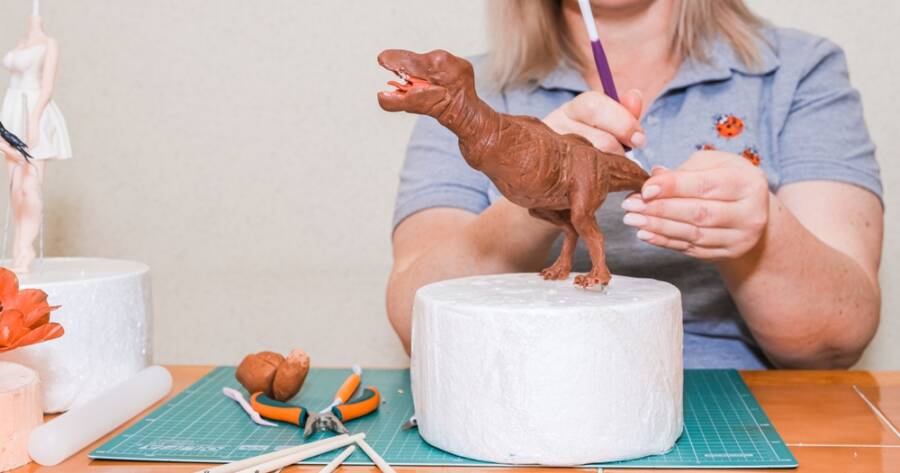In the golden age of food meets artistry, a new kind of creative genius has emerged—bakers and culinary sculptors turning confections into jaw-dropping, hyper-realistic masterpieces. From cakes that look like cheeseburgers to sculptures that mimic sneakers, plants, and even people, this world of edible art is pushing the boundaries of what food can be. Welcome to the mesmerizing, deliciously deceptive universe of hyper-realistic cakes and culinary sculptures, where imagination, skill, and sugar collide in the most extraordinary ways.
When Cake Becomes Canvas
At first glance, it’s a stack of books, a handbag, or a realistic plate of spaghetti. But slice into it—and surprise! It’s all cake.
Hyper-realistic cakes blur the line between illusion and dessert, crafted with painstaking precision. Artists use techniques drawn from sculpture, painting, and design, transforming fondant, modeling chocolate, and sponge into edible marvels that boggle the mind.
Social media has played a massive role in popularizing these creations. Viral videos of knives cutting through what appears to be a Croc shoe or a potted plant reveal the truth: it’s cake, not what it seems.
The Rise of the Cake Illusionists
These edible illusions didn’t emerge overnight. The roots of sugar art go back centuries, but today’s cake illusionists are blending traditional baking with modern tools like airbrushes, 3D printing, and even sculpting knives. Artists like Natalie Sideserf, Tuba Geçkil, and Ben Cullen (The BakeKing) have become household names in the cake world thanks to their mind-bending creations and viral success.
What sets them apart isn’t just baking talent—it’s a deep understanding of texture, proportion, perspective, and realism. A hyper-realistic cake might take days (or weeks) to design, bake, and assemble, often requiring engineering skills to ensure the structure stays intact.
Tools of the Trade
Creating a hyper-realistic cake involves more than flour and frosting. These edible sculptures rely on:
- Modeling chocolate and fondant: For smooth finishes, lifelike details, and sculpted accents.
- Airbrushing: Adds depth, shadow, and realism through subtle gradients and texture.
- Edible paints and powders: Bring surfaces to life, from glossy fruit skins to faux leather and metallic sheens.
- Structure supports: Wood, food-safe rods, and internal skeletons are often necessary for balance and durability.
It’s equal parts kitchen and artist’s studio—where a whisk meets a paintbrush.
Beyond Cake: The World of Culinary Sculptures
While cakes dominate the edible art scene, culinary sculptures expand the medium even further. Chefs and food artists create towering displays from chocolate, sugar, bread, ice, and even butter. These sculptures appear at food festivals, competitions, weddings, and high-end events, celebrating artistry through ephemeral, perishable materials.
One iconic form is chocolate sculpting, where artists carve life-sized animals or ornate scenes entirely from dark, milk, or white chocolate. Sugar sculptors, on the other hand, use blown sugar and pulled sugar techniques to create glass-like pieces that shimmer under lights.
These pieces aren’t always meant to be eaten—but they are meant to be admired (and often documented before they melt or collapse!).
Edible Art Meets Pop Culture
Hyper-realistic cakes and culinary sculptures have found a cozy home in pop culture and entertainment, from television shows like Is It Cake? on Netflix to Instagram and TikTok, where millions are mesmerized by cake reveals and edible transformations.
Brands and celebrities often commission custom cakes that go viral—think sneakers for Nike, a giant burger cake for a fast-food chain, or a wedding cake shaped like the couple’s dog.
This growing fascination reflects a cultural shift: food isn’t just nourishment—it’s an experience, a story, and a statement.
Where Taste Meets Talent
Hyper-realistic cakes and edible sculptures are more than just culinary trends—they’re modern works of art that challenge our perceptions and dazzle the senses. They inspire awe, laughter, and even disbelief, reminding us that creativity has no limits—even when it’s made of sugar and meant to be sliced.
So the next time you see a taco sitting alone on a table, don’t be too quick to bite—you just might be staring at a cake.

